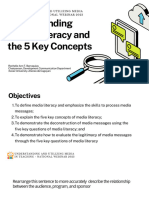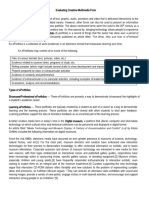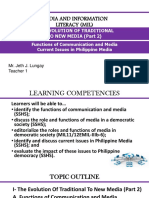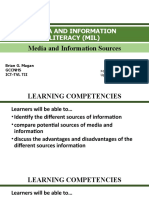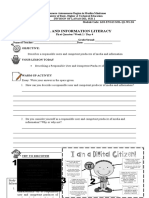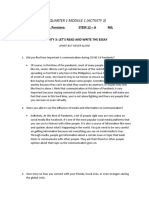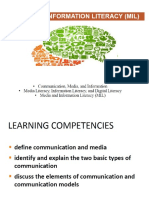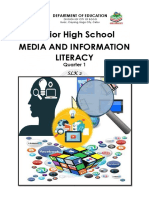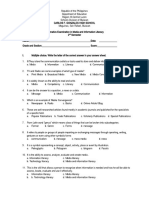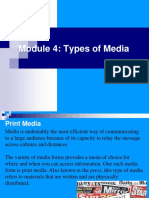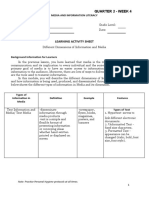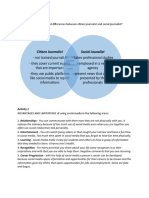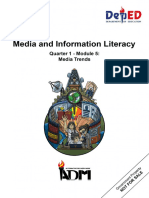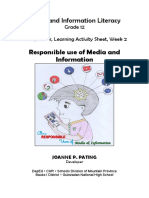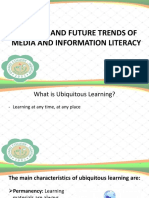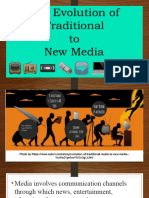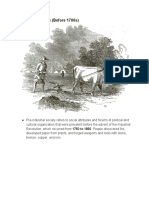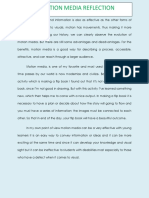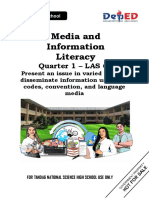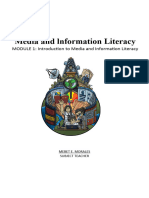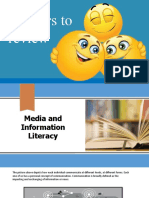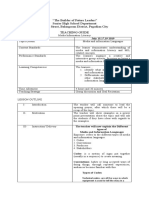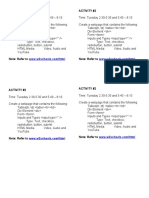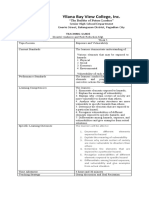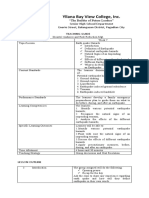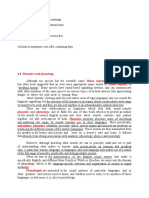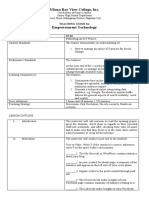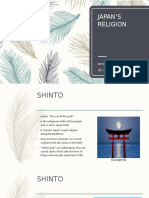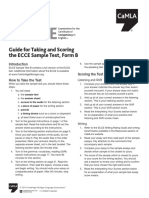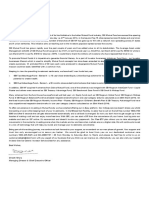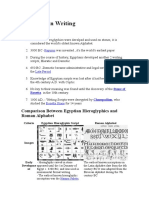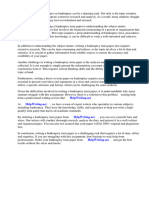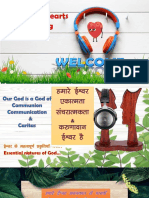100% found this document useful (1 vote)
980 views6 pagesInteractive FOR Media Information Literacy
This document presents an interactive module on media and information literacy that defines key concepts like media literacy, information literacy, and a media and information literate individual. It includes learning objectives, pre-tests, activities, and tests to assess students' understanding of different types of media like print media, radio media, TV media, and web media. The module aims to help students analyze the impact of media and technology on individuals and society.
Uploaded by
Joel Cabusao LacayCopyright
© © All Rights Reserved
We take content rights seriously. If you suspect this is your content, claim it here.
Available Formats
Download as DOCX, PDF, TXT or read online on Scribd
100% found this document useful (1 vote)
980 views6 pagesInteractive FOR Media Information Literacy
This document presents an interactive module on media and information literacy that defines key concepts like media literacy, information literacy, and a media and information literate individual. It includes learning objectives, pre-tests, activities, and tests to assess students' understanding of different types of media like print media, radio media, TV media, and web media. The module aims to help students analyze the impact of media and technology on individuals and society.
Uploaded by
Joel Cabusao LacayCopyright
© © All Rights Reserved
We take content rights seriously. If you suspect this is your content, claim it here.
Available Formats
Download as DOCX, PDF, TXT or read online on Scribd
/ 6


